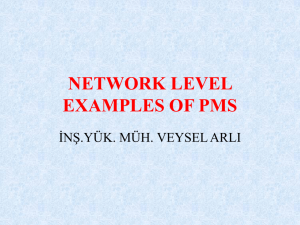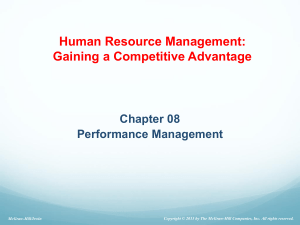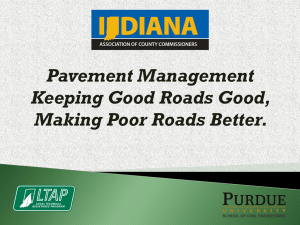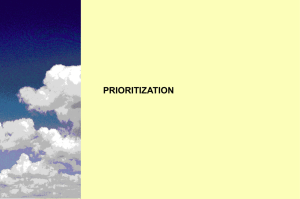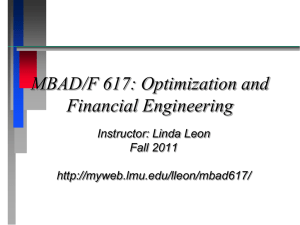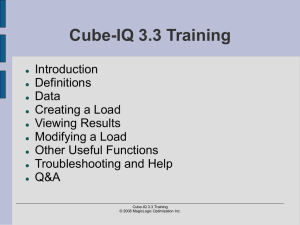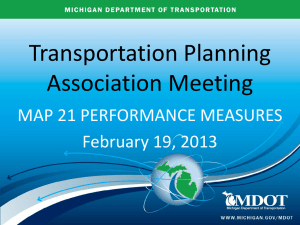The Benefits of Good Pavement Management (PowerPoint)
advertisement
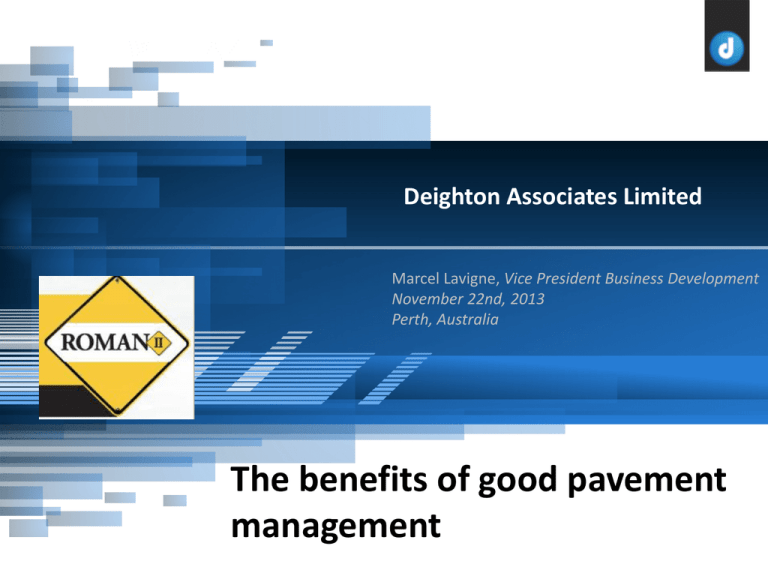
Deighton Associates Limited Marcel Lavigne, Vice President Business Development November 22nd, 2013 Perth, Australia The benefits of good pavement management Agenda • Recent history of Pavement Management • Evolution in recent years • Impact on PMS • Why use a PMS? • Prioritization vs Optimization • Why not use optimization? • Tools available • Conclusion A quick peek at history Milestones: Pavement Management Source: Ralph Haas, 2001 Processing power: X 1000 Source: Wikipedia, Author WGSimon Processing speed X 500 Impact on Pavement Management • • • • • • • • Automated data collection Development of high-performance PMS Increased complexity of analysis scenarios More powerful algorithms and models Faster processing of metadata Quicker analysis Faster outputs Optimization of analysis Why use a PMS? • • • • Ability to manage large networks Share and exchange information More objective look at alternatives Access to historical and actual data as well as projections • Capability of managing assets through their life cycle • Ease to produce “what ifs” • Easily produce reports Why use a PMS? Life Cycle Cost Analysis Optimization • Definition: – Optimization chooses the strategies that maximise the outcome, defined by the user, while adhering to a set of constraints such as budget or minimum level of service. It can be defined as a tool within a good Pavement Management System that provides you with quantitative feedback and suggestions, ultimately allowing you to knowingly revise a program by using your judgment to weigh political, engineering and economic factors. Optimization vs Prioritization • Prioritization = Ranking • Limitations of ranking: – What is vs What will be – Insufficient focus on impact to overall network – Does not deal with time scale – May result from subjective selection rules – Does not address capacity vs demand issues • Ranking = Worst first Prioritisation: Ranking vs dTIMS Optimisation Capability Engineering judgement Decision tree Performance modelling Alternative options Life cycle costing Economics (BCR) Network level performance Simplicity Tactical analysis Strategic analysis Source: P. Kadar, ARRB Ranking Optimisation Optimization vs Prioritization Optimization vs Prioritization COSTS OVER 20 YEARS: OPTIMIZED= 80% OF RANKING COSTS Source: T. Henning, NZTA, 2013 dTIMS: A strategic planning tool Your chance to shape the future • dTIMS is a Strategic Level tool • It models the performance of your assets • It provides clarity WRT your options • Over a long time/traffic • In respect of your constraints (budget, LOS, risk levels, etc.) • Evaluates thousands of potential maintenance strategies • Recommends the strategies with the highest ROI (meeting your constraints) Conclusion • "There should be a desire for change by skillful professionals who can make a difference in the way decisions are made and which will result in reduced costs and improved performance," said Dr. Tom Larson, a former FHWA administrator, as part of his remarks at the 1985 International Conference on Pavement Management. He pointed out that "without dollars there will be no need for pavement management and without good management there will not be enough dollars to go around."
